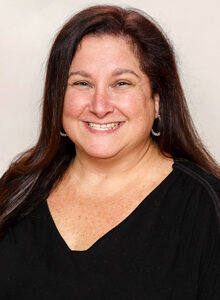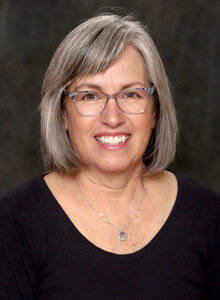You are enjoying your morning cup of coffee and planning your day. Your young adult son with Autism Spectrum Disorder (ASD) is online in his room. There’s a forceful knock on the door. You open the door and find Federal Agents on your doorstep. They barge in to arrest your son and the rest is a difficult, emotional, frustrating, and expensive blur. What just happened? Your son was arrested for viewing and possession of child pornography on his computer.

Many young adults with ASD are socially isolated and turn to the internet to pass the time. Online communities are more accepting as they don’t require the in-person stressors of reading social situations, facial expressions, understanding of group dynamics, self-regulation, dealing with social anxiety, and there’s less worrying about what people will think of them. No one asks your age or cares how old you are. There’s no need for small talk and they easily find groups with common interests. The feeling of having a friend and belonging often leads to participation in an unsafe online community and overrides any sense of knowing right from wrong.
The online world is welcoming and dangerous. It’s as if everyone is wearing a mask and you don’t really know who you are talking to. People lie about who they are and those who are vulnerable, including people with ASD, often fall prey to online predators. While surfing online they may view child pornography with the maligned guidance of their new “friends.”
An adult with ASD, who became entangled in the criminal justice system, revealed that he joined an online community. He stated it was easy to chat with the other guys because he was readily accepted. He then engaged in the group chat about child pornography. It was the first time he was accepted without judgment and felt a sense of belonging. Looking back, he realized the people leading the chat took advantage of his vulnerability and desire to be part of a group. Unfortunately, he was arrested for possession of child pornography. Another son told his parents, “There’s teacher porn, librarian porn and nurse porn. How was I supposed to know that child pornography is illegal?” He was also arrested after a knock on the door.
“The internet can be a wonderful educational tool and it can also ruin your life,” said Nick Dubin, a male with ASD who was arrested after unwittingly downloading child pornography on his computer. Nick and his family navigated the criminal justice system and wrote a book to help others avoid the same fate (Attwood, et al., 2014).
The lack of belonging to a peer group that is accepting of who they are and a lack of education about what pornography is legal, illegal and the “why” of the illegality is a significant problem for people with ASD. This is the root cause of too many arrests each year of males with ASD possessing, collecting, and viewing child pornography online without intended malice.
This is an ongoing issue. The lack of interpersonal relationships and social skills, challenges in initiating social exchanges, low self-esteem, naivete, loneliness, a need to please others even if the relationship is unhealthy leads to exploitation and crimes (Henault, 2006).
Viewing pornography in your bedroom is thought to be a private activity. However, anything viewed online is public, even when viewed in a private space. All Internet Service Providers are required by law to provide information on viewers looking at child pornography. Any time a person views child pornography, law enforcement is notified potentially leading to a knock at the door. It is important to educate individuals of all ages to understand child pornography is illegal and, if viewed or accidentally clicked on, to immediately close the laptop, turn off the device and let a safe person know.
It is surprisingly easy to access pornography online and for free. Child pornography images are readily available through virtually every Internet technology, including social networking websites, file-sharing sites, photo-sharing sites, gaming devices, and even mobile apps (2020 Child Pornography (justice.gov)). The ease of accessibility may lead to viewing and/or downloading of the material
Individuals with ASD need the education to understand child pornography is illegal and why. A person with ASD may see a child smiling in a picture or video and think the child is happy and not understand that children under the age of 18 cannot provide consent according to the law and are victims of sexual abuse. Some states consider the age of consent to be younger than 18 years old, but when child pornography is concerned, any depiction of a minor under the age of 18 engaging in sexually explicit conduct is unlawful (What Legally Makes It Child Pornography? – HG.org).
“People on the autism spectrum are notoriously law-abiding rule followers, but if they don’t know a rule, they don’t follow it,” said Dr. Lynda Geller, a clinical psychologist specializing in the unique challenges of individuals with ASD. This highlights the need for people with ASD to receive this education.
There is an urgent need for education on online safety and child pornography. Parents and carers are often reluctant to talk about these topics. The education must be comprehensive and explicit, utilizing visuals, discussions, scenarios, and must be made available and accessible for everyone with Autism Spectrum Disorder. This education is offered by Ease and can be accessed at www.EaseEducates.org.
Take the time to educate your children and prevent the heartbreak of a knock at the door.
Additional Resources for Parents
To learn more about Ease Empowerment, Advocacy & Sexuality Education, LLC, please contact Arlene Lechner, Med, and Melissa Hochberg, Med, at EaseEducates@gmail.com and visit www.EaseEducates.org.
References
Attwood, T., Henault, I., & Dubin, N. (2014). The Autism Spectrum, Sexuality and the Law: What every parent and professional needs to know.
Hénault, I. (2006). Asperger’s syndrome and sexuality: from adolescence through adulthood.
https://www.justice.gov/criminal-ceos/child-pornography#:~:text=Child%20pornography%20is%20a%20form,less%20than%2018%20years%20old. Updated May 2020.
https://www.hg.org/legal-articles/what-legally-makes-it-child-pornography-38082







This is an important blog post! I hope that more people will read and understand the dangers of engaging in child pornography. It is heartbreaking to think about the children who are involved in this industry, and it is important that we all do